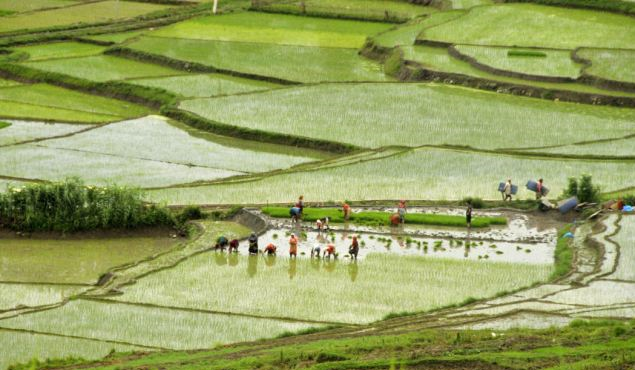KATHMANDU: This year, paddy transplantation across Nepal has reached an impressive 98 percent completion, covering approximately 1.372 million hectares of the 1.4 million hectares of arable land available for paddy cultivation. The Ministry of Agriculture and Livestock Development has reported significant progress compared to the previous fiscal year, largely attributed to favorable rainfall patterns.
In the fiscal year 2023/24, only about 90 percent of the land had been transplanted by July, but in the current fiscal year 2024/25, this figure has surged by eight percent. The improved transplantation rate is expected to lead to an increase in rice production, as confirmed by Mahanand Joshi, the information officer for the ministry. Joshi stated, “The favorable weather conditions this year have positively impacted paddy cultivation, and we anticipate a notable rise in rice output.”
Provincial data reveals that Sudurpaschim Province has achieved 100 percent paddy transplantation, marking the highest completion rate in the country. Meanwhile, Koshi Province has completed less than 95 percent of its paddy transplantation efforts. Last year, Sudurpaschim also led the nation with 99 percent transplantation, while Madhesh Province recorded the lowest at only 60 percent.
The increased transplantation rate and expected boost in rice production come at a time when Nepal has been reducing its reliance on rice imports. In the fiscal year 2023/24, the country imported rice and paddy worth NPR 21.34 billion, a significant drop from NPR 35.90 billion in the fiscal year 2022/23. This decrease of approximately NPR 13 billion highlights the impact of improved domestic production.
Joshi further indicated that with the anticipated six percent rise in rice production this year, imports are likely to decrease even more, contributing to Nepal’s goal of achieving greater self-sufficiency in rice.

